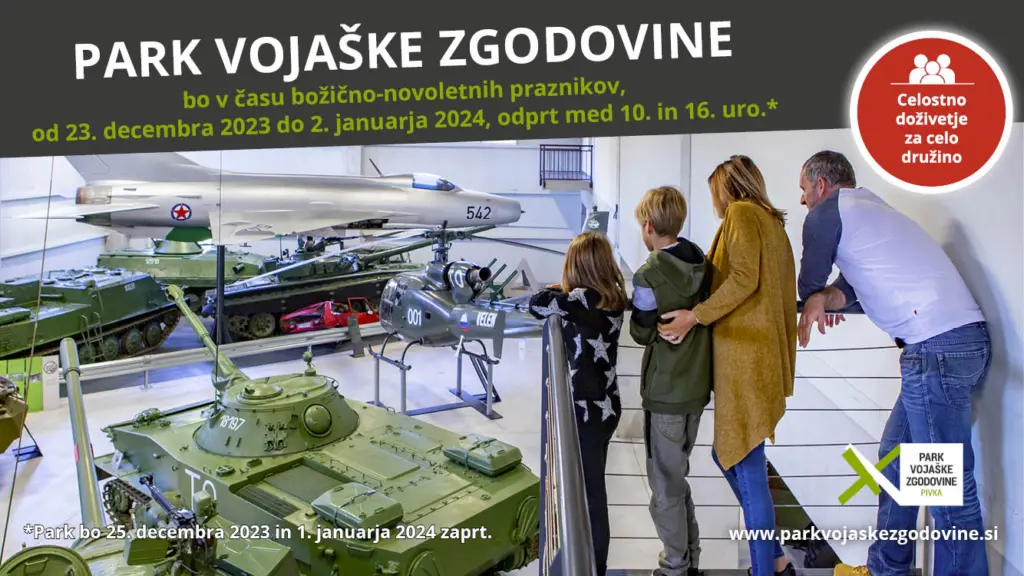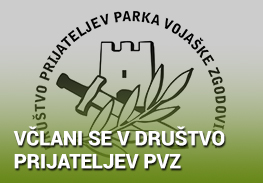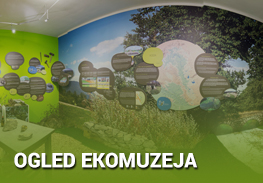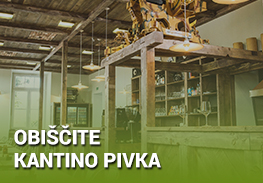Park visited by the Czech Ambassador to Slovenia.
On Thursday, February 29, 2024, the Park of Military History was visited by the Ambassador of the Czech Republic, His Excellency Jiří Kuděla. The ambassador was received by the director of the park, Mr. Janko Boštjančič, who presented the development and perspectives of the Park. Although the Park has been collaborating excellently with the Czech embassy for several years, the meeting expressed a mutual interest in even closer cooperation.
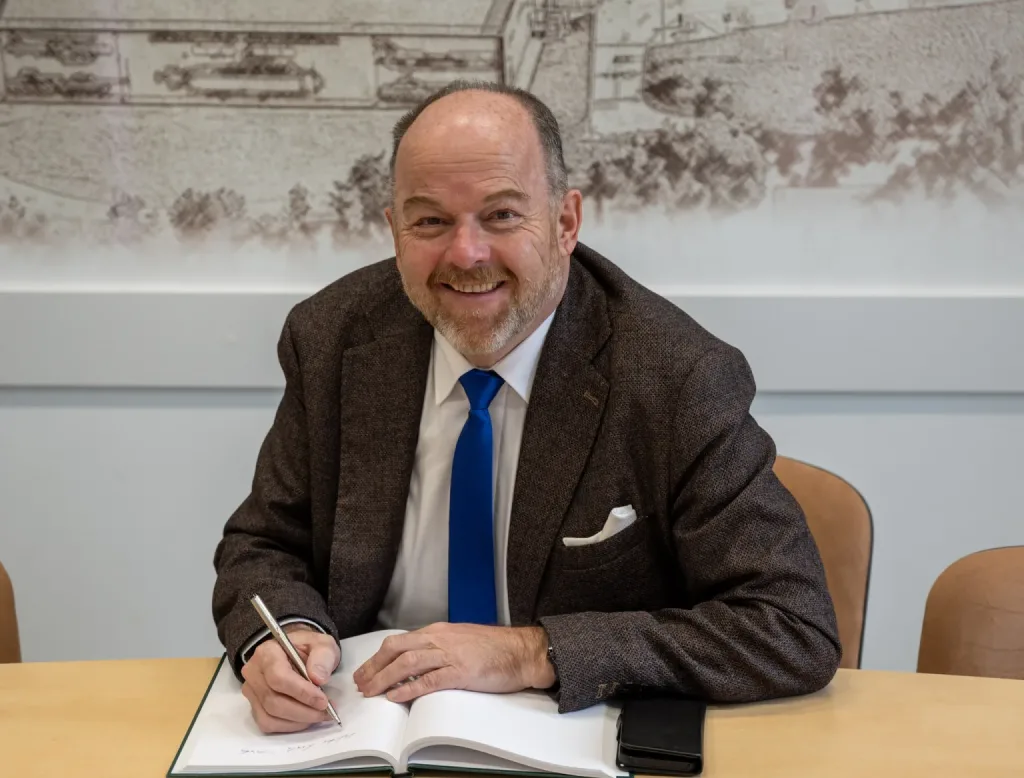
Ambassador Kuděla also showed great interest in the new exhibition “Feldspital 808,” which, according to his words, not only represents a part of Slovenian heritage but also tells a broader story of Central European countries. At the conclusion of the visit, the ambassador signed the guestbook, and further contacts with both the embassy and related museums in the Czech Republic were agreed upon.
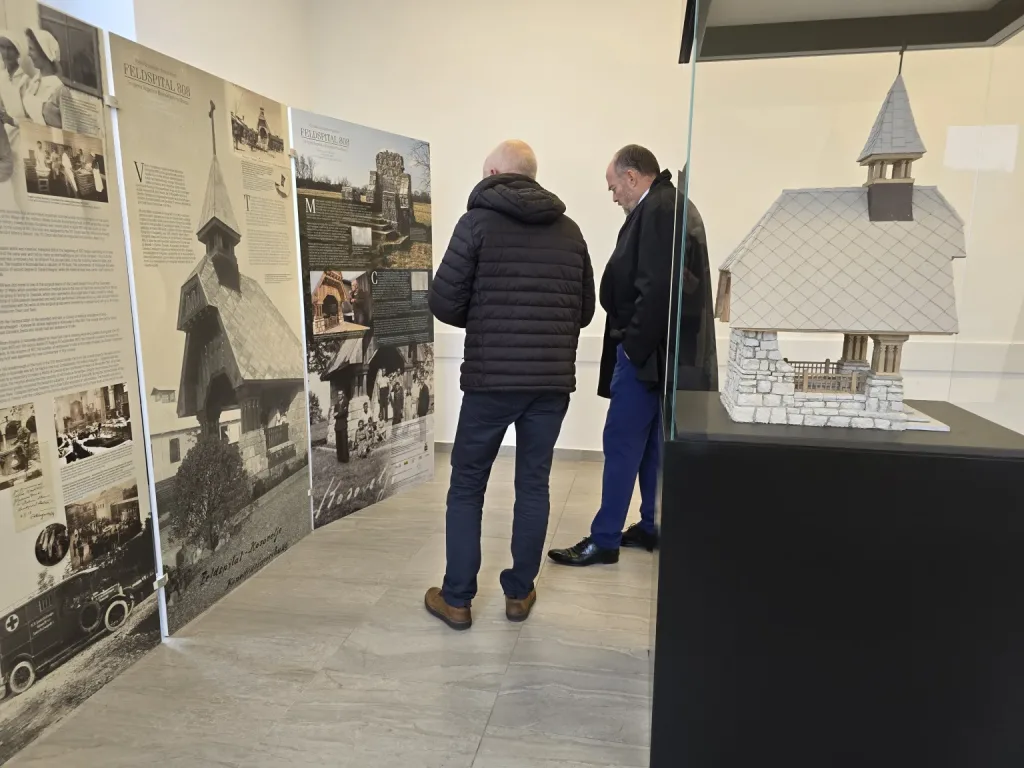
Working hours in March
The Park of Military History will be open in March from Monday to Friday between 11:00 AM and 3:00 PM, and on Saturdays and Sundays between 10:00 AM and 4:00 PM.
Prior reservation of a time slot is mandatory for a tour of the submarine interior and a test flight on the flight simulator with MiG-21 or Spitfire aircraft as an additional museum offering. You can make a reservation by calling +386 (0)31 775 002 or emailing [email protected].
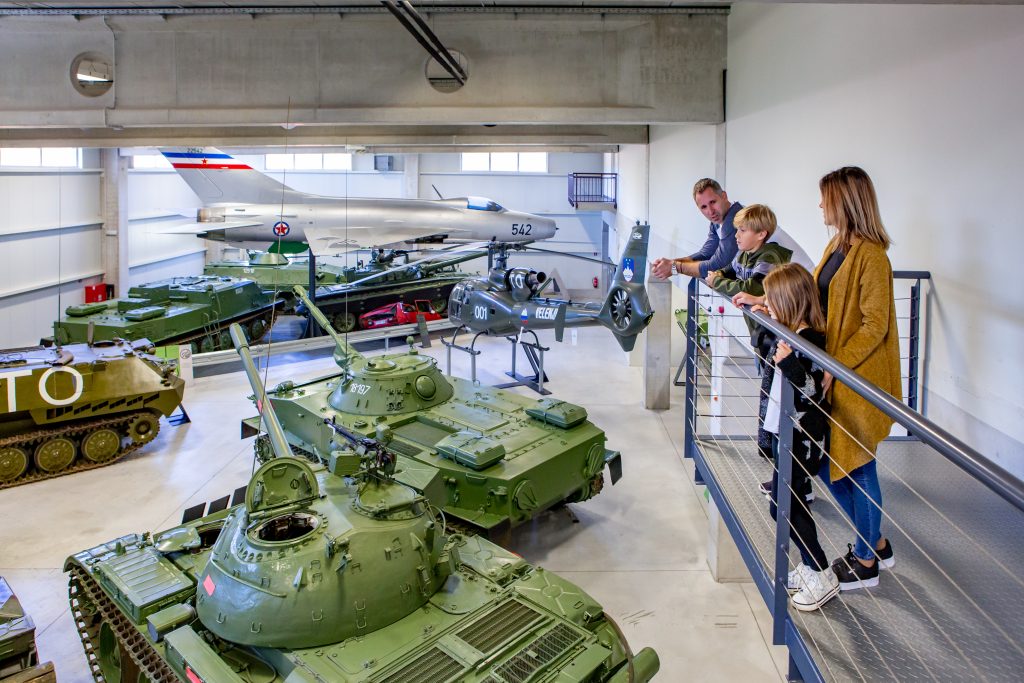
Opening of the exhibition ‘Military Field Hospital – Feldspital 808 and its chapel in Kosovelje on the Karst.
In the Park of Military History, on February 6th, the Month of Culture commenced with the opening of a new exhibition titled “Military Field Hospital – Feldspital 808 and its Chapel in Kosovelje on the Karst.” Among the numerous military hospitals that provided healthcare to wounded and sick soldiers in the rear of the Isonzo Front during the First World War, one stood in the village of Kosovelje on the Karst in 1917. The remnants of the remarkable hospital chapel still stand at the site, preventing it from falling into historical oblivion.
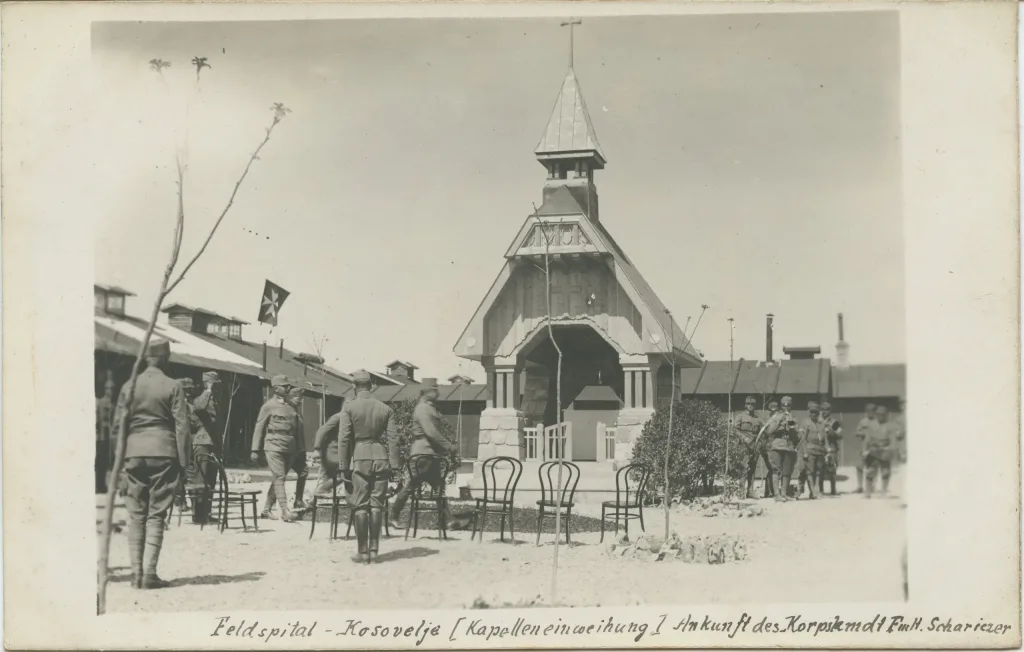
Locals from Kosovelje and surrounding villages, dedicated to reviving the historical memory of the events in their village during the First World War, inspired the Park of Military History for this project. They plan to reconstruct the chapel as a memorial and a reminder of the wartime events. The exhibition on Feldspital 808 is curated by the director of the Park, mag. Janko Boštjančič.
The Austro-Hungarian military field hospital, Feldspital 808, was initially established on the Serbian Front shortly after the war began. However, following Italy’s war declaration, it was relocated to the Isonzo Front. It first stood in Škrbina on the Karst, then temporarily moved to Štanjel. In April 1917, it began operating in Kosovelje, providing 170 beds for the wounded and sick. The hospital complex in Kosovelje consisted of 9 buildings, including four barracks for the wounded, a recovery barrack, an officer’s barrack, an eye clinic, a barrack for patients with hemorrhoids, and a kitchen barrack. After the breakthrough of the front in October 1917, the hospital moved to Motta di Livenza, 40 kilometers northeast of Venice, where it remained until the end of the war.

The centerpiece of the Feldspital 808 exhibition is a model of the chapel, erected simultaneously with the hospital barracks in Kosovelje for the spiritual care of the wounded, sick, and hospital staff. The intricately detailed model was crafted by Franci Pogačar from Ljubljana, who invested over 2,500 hours of work. Creating the model posed a significant challenge, as the chapel was demolished after the Second World War, and for a long time, no photographs of it were known. The preparation of the model’s plan was made possible only by the precious discovery of a photo album of Feldspital 808 in Germany, coincidentally found by the renowned collector Marko Mohorčič. Based on these photographs and field measurements, architect Tomaž Bekš from Kosovelje drew up an accurate plan of the chapel, serving as the basis for creating the model.
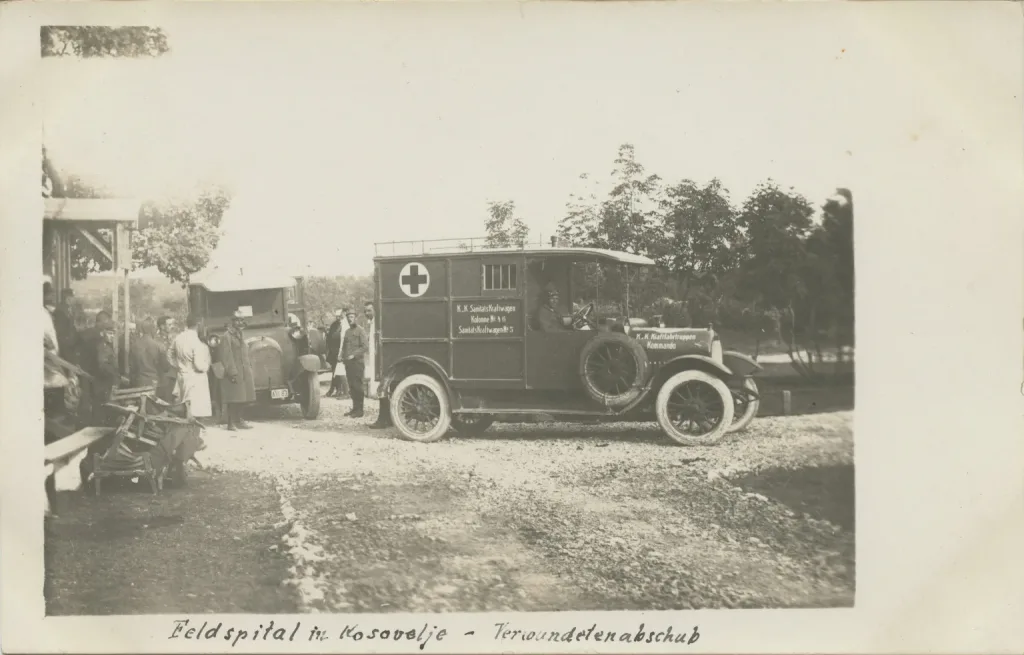
Unpublished photographic material further enriches the exhibition, providing a glimpse into the chapel’s role in providing solace and comfort during the worst of the war’s turbulence. The exhibition design, in a movable panel construction suitable for hosting, was created by Barbara Sirk and Žiga Okorn from Uvid.si. The exhibition setup received support from the Municipality of Sežana, the company Dvig d.o.o. from Vrhnika, the Pliska Development Society, and the companies MISEL d.o.o. and AVTO JEREB d.o.o. Donors from Kosovelje also played a crucial role in the project’s implementation.
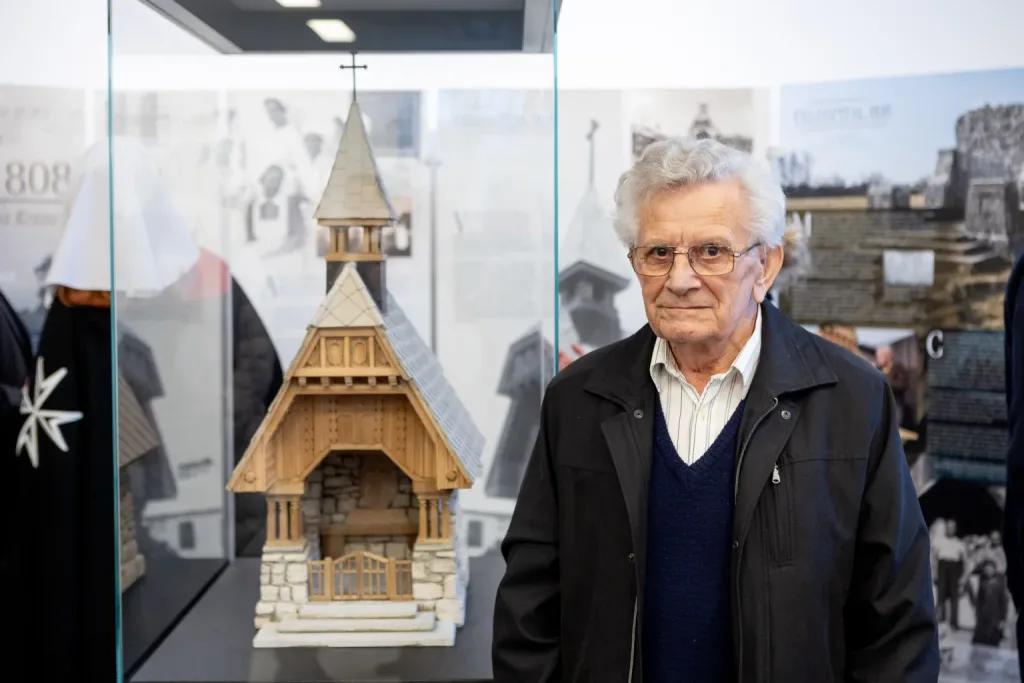
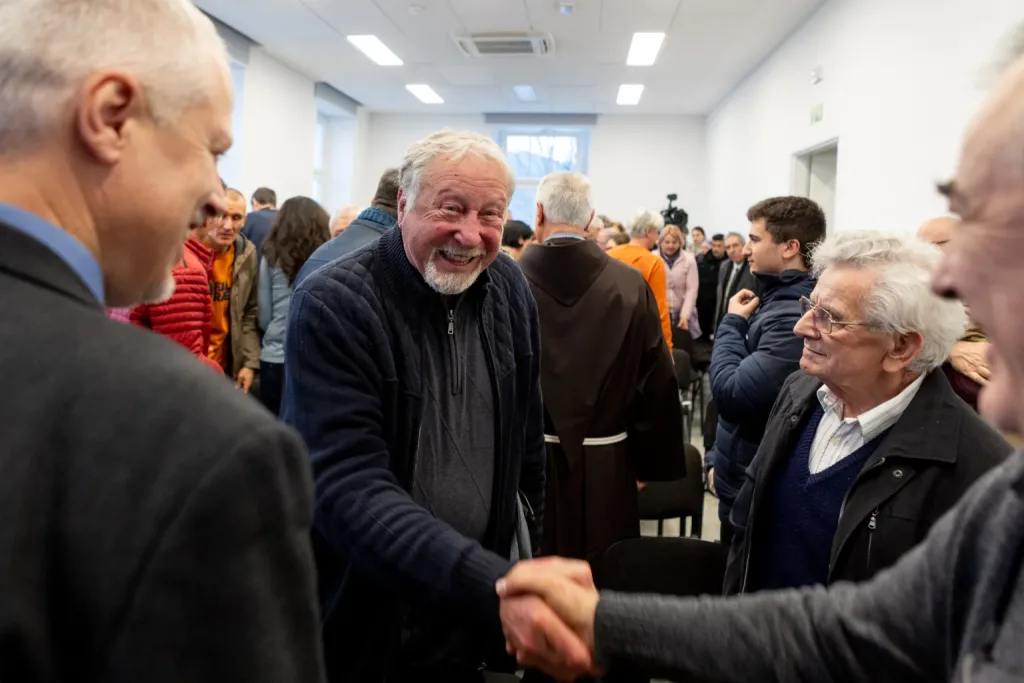
The exhibition opened with a brief ceremony on February 6, 2024, in the Park of Military History. Due to the significant role played by the Maltese Order in the healthcare at Feldspital 808, the exhibition was initially planned to be opened by the Ambassador of the Sovereign Military Order of Malta in the Republic of Slovenia, His Excellency Prince Mariano Hugo von Windisch-Graetz. However, he had to cancel his participation due to unforeseen obligations in Rome. In his absence, Chancellor of the Slovenian Association of the Maltese Order Roman Vučajnk read a speech on his behalf, expressing gratitude and praising the Park for its approach to presenting military-historical heritage with sensitivity to human suffering. Prince Windisch-Graetz emphasized the exhibition’s significance in highlighting the role of the Maltese Order during World War I and called for an end to all wars. Dušan Luin, a local from Kosovelje and one of the main advocates for the chapel’s restoration in Kosovelje, also spoke about the importance of Feldspital 808. Dr. Janez Bogataj, a renowned Slovenian ethnologist, presented the exceptionally creative work of the chapel model’s author, Franci Pogačar, who has been followed for a decade.
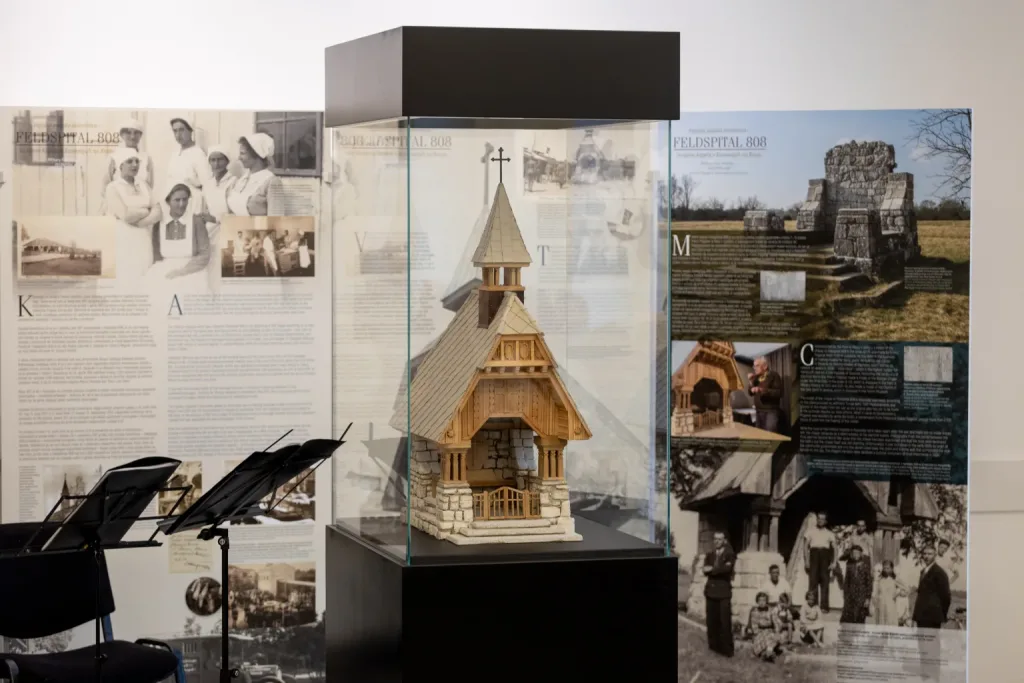
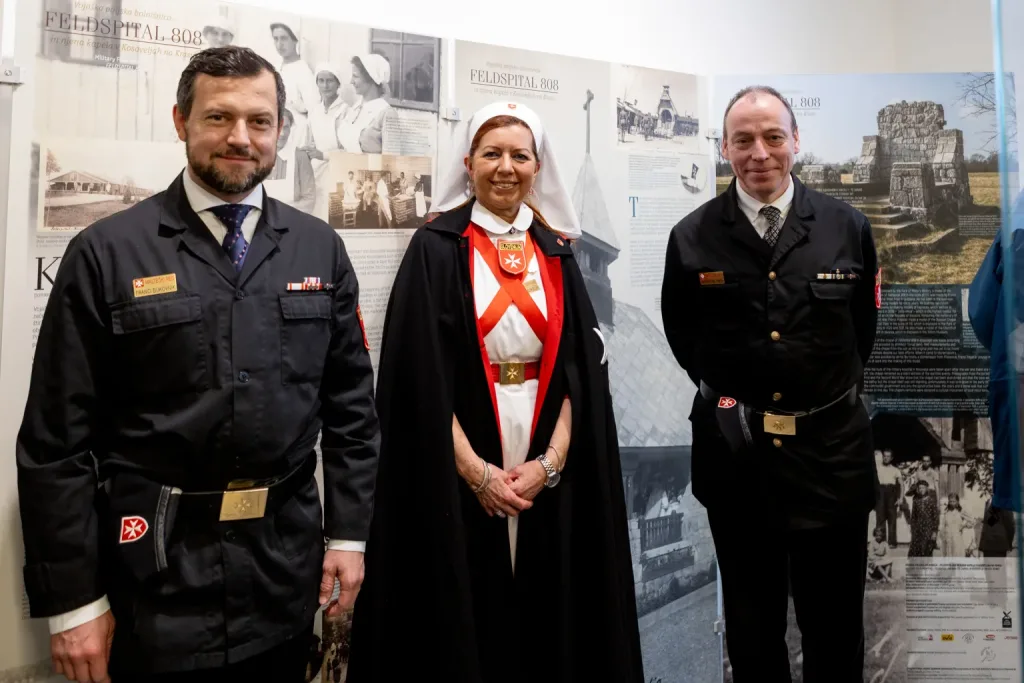
The opening ceremony was attended by Deputy Ambassador of the Slovak Republic Peter Bak, Hungarian Military Attaché Colonel László Kaputa, Mayor of the Municipality of Sežana Andrej Sila, Mayor of the Municipality of Pivka Robert Smrdelj, Commander of the Maltese Aid Society of Slovenia Franci Bukovnik, Chief of the Military Vicariate of the Slovenian Armed Forces Matej Jakopič, representatives from the town of Motta di Livenza, and other distinguished guests. The cultural aspect of the event was enriched by the performance of the instrumental-vocal group “Naši fantje,” consisting of locals from the Karst.
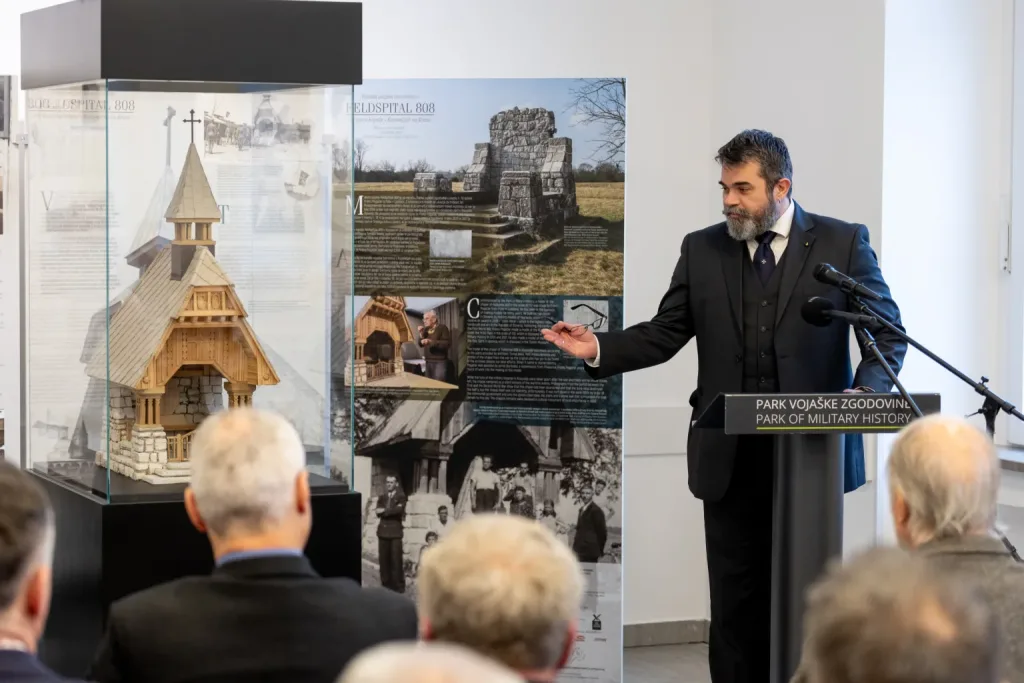
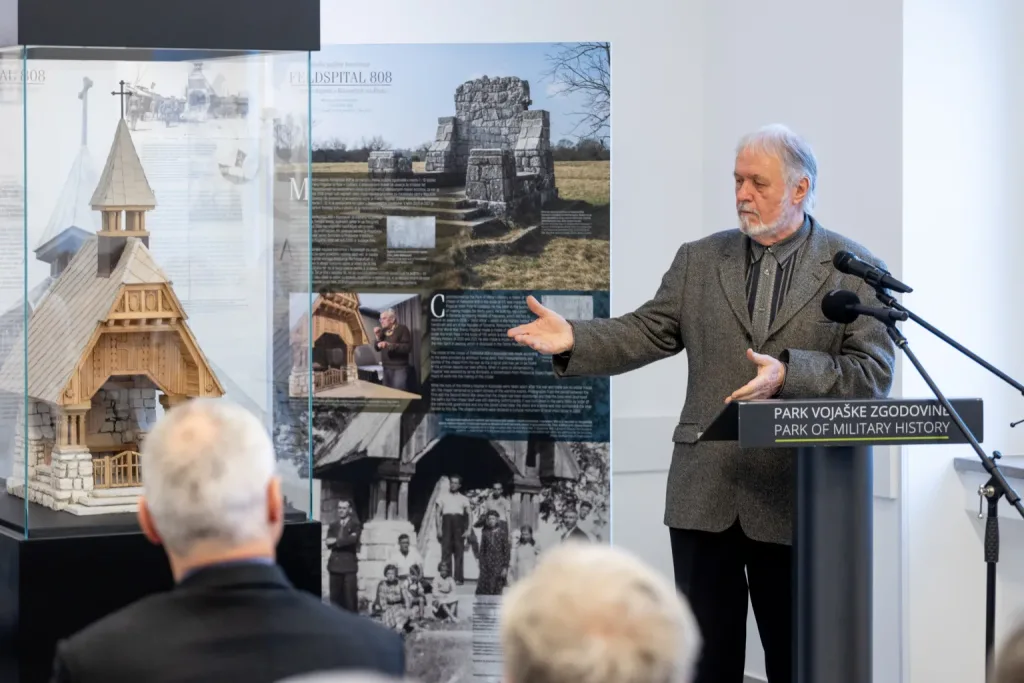
The exhibition “Military Field Hospital – Feldspital 808 and its Chapel in Kosovelje on the Karst” will be on display in the Park for approximately two months before moving to other locations.

Event: History weekend 2024
HISTORY WEEKEND – September 13–15, 2024 (Park of Military History)
Once again, on the third weekend of September, specifically from the 13th to the 15th in 2024, the Park of Military History is organizing History Weekend as the central museum event of the year and the largest military history event at the national level. History Weekend, which has taken on a new look to succeed the former Festival of Military History, is designed as a multi-day series of events dedicated to an immersive exploration of history.
Traditionally commencing with “Vestirnga”, the annual induction of military conscripts organized by the Administration of Defense, where conscripts arrive at the event on traditional recruitment vehicles, the dynamic activities continue on Saturday with an enriched museum program, numerous guided tours, and an open day at the Stanislav Požar Military Barracks. The climax occurs on Sunday with illustrative rides of armored vehicles from the operational part of the collection and a dynamic presentation by the Slovenian Armed Forces and the Slovenian Police.
Friday, 13th September 2024
– Introduction of conscripts from the 2006 cohort and presentation of conscription vehicles and the Slovenian Army – Vestirnga 2024
Saturday, 14th September 2024 from 9:00 to 18:00
10:00–17:00 Open Day at Stanislav Požar Barracks in Pivka
**9:00 Hike to Primož and tour of the interior of the Alpine Wall fort
10:30 Guided tour of the exhibition “They Shall Forge Their Swords into Ploughshares and Their Spears into Sickles”
12:00 Opening of the exhibition “Slovenia under a Hail of Bombs – Allied Bombing of Slovenia 1944–1945”
13:30 Guided tour of exhibitions and collections in pavilions A, B, and C
15:00 Lecture and Film Screening: “Slovenian Righteous Among the Nations, France Punčuh; 1902 (Logatec)–1944 (Warsaw)”
11:00–15:00 Children’s Workshops at the Park of Military History
State Museum Depots (Building D):
9:30 Guided Tour of the Wheels of Fate Exhibition by the Museum of Recent and Contemporary History of Slovenia, and a Guided Tour of the Depots
9:30–17:00 Independent Visits to the Depots
Entry fee to the depots is charged according to their price list – 2 EUR per person.
Sunday, 15th September 2024 from 9:00 to 18:00
**9:00 Hike to Primož and a guided tour of the interior of the Alpine Wall Fortification, Organised by the Rapalska Meja (The Rapallo Border) Association
10.00 inauguration of the police boat P-111 for visitors
10.30 Dušica Kunaver: THE ARMY in Slovenian folk tales
11.00 dynamic presentation of the Police
12.00 guided tour of the ZgodoVikeneda sites
12.30 performance by the veteran firefighters of Volunteer Fire Department Studeno with a firefighting demonstration
13.00 dynamic presentation of Volunteer Fire Department from Postojna
13.45 demonstration of historic armoured vehicles from the collection of the Slovenian Army Military Museum and the Park of Military History
14.30 dynamic presentation of the Slovenian Army
15.00 DJ Heri Šolder – retro music from vinyl records
16.00 Dušica Kunaver: THE ARMY in Slovenian folk tales
16.30 guided tour of the “Enigma” exhibition
17.00 guided tour of the new exhibition “Slovenia under a Hail of Bombs – Allied Bombing of Slovenia 1944–1945”
10.00–17.00 static presentation of the Slovenian Army
10.00–17.00 static presentation of the Police
10.00–17.00 static presentation of the firefighters
10.00–17.00 static presentation of the Civil Protection
10.00–17.00 presentation by the “Association of Slovenian Policemen” with legendary vehicles of the former Police
10.00–17.00 presentation of the “Association of Veteran Firefighters PGD Studeno”
10.00–17.00 presentation of the airsoft club “H.A.S. team”
10.00–17.00 presentation of the “Association of Rescue Dog Handlers Postojna”
10.00–17.00 presentation of the “Rehabilitation and Training Center for Horses – Neapolitano”
10.30 – 17.00 guided tours of the interior of the boat P-111
Sunday children’s workshops:
11.00–15.00 children’s workshops by the Inner Carniola Museum of Postojna
11.00–15.00 children’s workshops by the Park of Military History
11.00–15.00 children’s workshops by Volunteer Fire Department Postojna
The organizer reserves the right to make changes to the program.
State Museum Depots (Building D):
15:30 Guided Tour of the Wheels of Fate Exhibition by the Museum of Recent and Contemporary History of Slovenia, and a Guided Tour of the Depots
10:00–17:00 Independent Visits to the Depots
Entry fee to the depots is charged according to their price list – 2 EUR per person.
ADMISSION FEE
On the day of the event, the regular price list of the Military History Park applies – Price List 2024.
TOUR OF THE SUBMARINE INTERIOR AND FLIGHT SIMULATOR EXPERIENCE WITH MiG-21
A prior reservation is MANDATORY for the tour of the submarine interior and the flight simulator experience. Please book your time slot by calling +386 31 775 002 or emailing [email protected].
PARKING – Sunday, 15th September 2024
Visitors are advised to consider arriving in Pivka by train. For those arriving by personal vehicle, free parking will be available in designated parking areas. A free shuttle service will operate between the designated parking areas and the Park from 10:00 to 17:00. Visitors are encouraged to arrive in Pivka on time.
NOTICE
The event will be photographed and filmed. Photos and recordings will be used for promotional purposes by the Military History Park. Visitors agree that they may be recorded or photographed during the event. The organizer does not guarantee against lost or damaged items belonging to visitors. Visitors must follow the instructions of the organizer’s security personnel.
———————————————–
* Stanislav Požar Barracks, Kolodvorska 59, 6257 Pivka (1 km from the Park in the direction of Ilirska Bistrica)
** The hike is suitable for all ages. The participation fee for the hike is 5 EUR. Children under 15 can participate for free. Please bring flashlights for the tour of the underground fort at Primož. Hiking shoes and clothing are recommended. You can park at the Park of Military History parking lot. Participation in the hike is at your own risk. The hike will be canceled in case of bad weather.
CONTACT:
Park of Military History (Kolodvorska 51, 6257 Pivka)
T: +386 (0)31 775 002
Twentieth Anniversary of the Last Dive of Submarine P-913 Zeta
On this day, December 23, 2003, in Tivat, Montenegro, the last dive of the midget submarine P-913 Zeta took place during a voyage. The crew on this dive consisted of sailors and officers of the Montenegrin Navy: Aleksandar Petković, Srđan Nikolić, Salija Jašarević, Dragan Đukanović, and Dalibor Žarić. This marked the final dive of any submarine from the former Yugoslav Navy. The last submarine unit was definitively decommissioned in March 2005, precisely 77 years after the arrival of the first two submarines, Hrabri (P-1) and Nebojša (P-2), in Tivat, marking the beginning of submarine units in the Yugoslav Royal Navy. Tivat thus became the birthplace and the end of submarine warfare on the eastern side of the Adriatic.
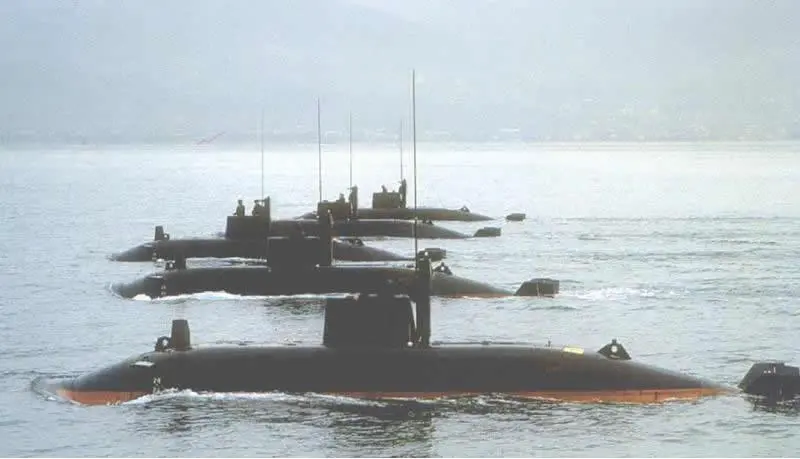
After the donation of the submarine P-913 by Montenegro to the Republic of Slovenia in 2008, it safely arrived at the Park of Military History Pivka on April 17, 2011. The spectacular transport of the submarine, which traveled from the submarine base in Tivat to the port of Bar, then across the Adriatic to Bari, and finally on a truck along Italy to Slovenia, was carried out free of charge by the company CEM-TIR d.o.o. The unloading in Pivka was conducted by the company Dvig d.o.o.
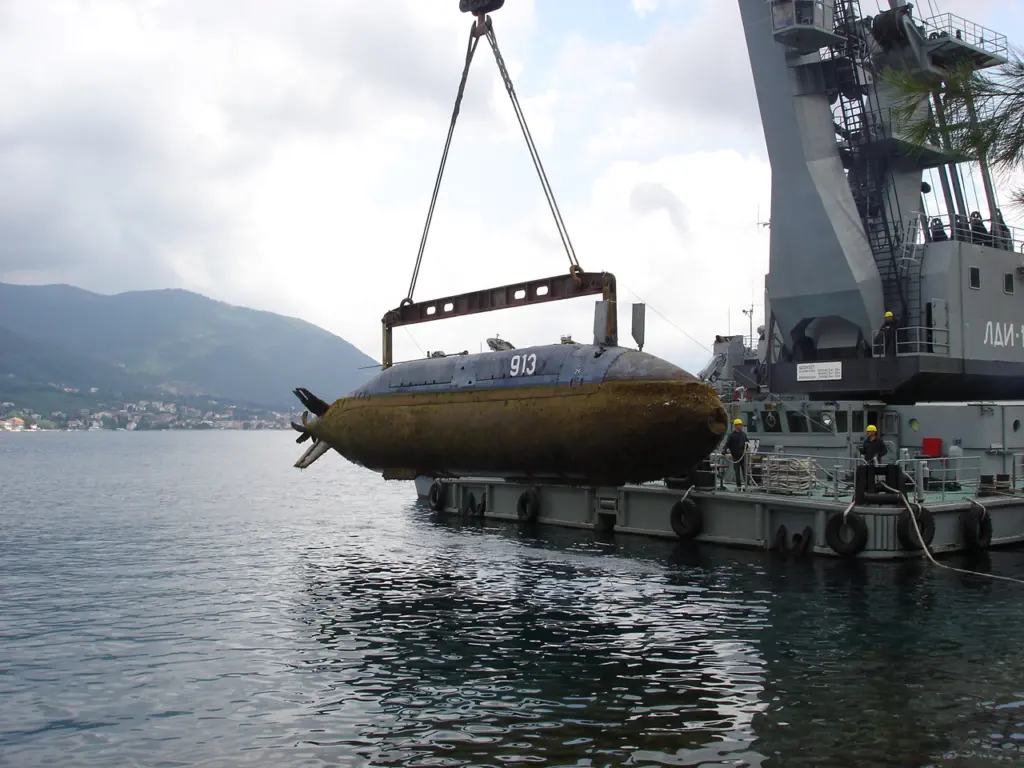
The donation of the submarine was largely the result of years of efforts by former submariners who unite in Slovenia under the association called “Podmorničar” (Submariner). In this context, the role of former Rear Admiral Marjan Pogačnik and Captain of a warship Vojko Gorup deserves special mention.
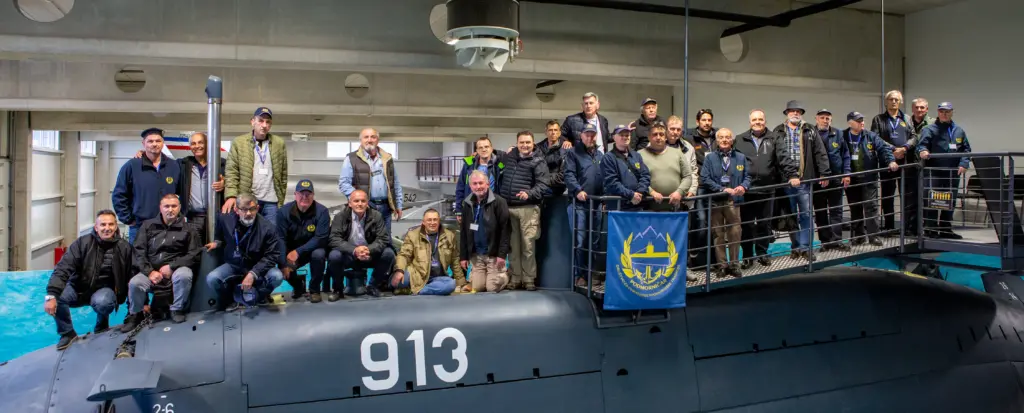
Submarine P-913 Zeta, measuring nineteen meters in length and weighing 76 tons, belongs to the so-called midget or commando submarines of the Una class. In the 1980s, the Yugoslav Navy concluded that larger submarines were unsuitable for performing various tasks in the Adriatic Sea due to its specific characteristics. At the same time, they were looking for a more economical way to increase the submarine fleet. By 1989, six pocket submarines were built in Split, named after rivers from each republic of the former Yugoslavia. The submarine in the Park is named after the Montenegrin river Zeta, and its sponsor during the launch was the municipality of Nikšić in Montenegro. The basic crew of the submarine consisted of four members, and it could also transport up to six operators/divers.
Submarine P-913 Zeta represents an exceptional example of military-technical heritage, and Slovenian experts and industry played a significant role in its development. In addition to being a technical monument, the Zeta submarine also serves as a memorial to generations of Slovenian submariners well-represented in the Yugoslav Navy.
Working hours during Christmas-New Year holidays
Park of Military History will be open during the Christmas-New Year holidays, from December 26, 2023, to January 2, 2023, from 10:00 AM to 4:00 PM. The Park will be closed on December 25, 2023, and January 1, 2023.
For a tour of the submarine’s interior and a flight simulator MiG-21, ADVANCE RESERVATION IS MANDATORY. You can make a reservation at 031 775 002 or [email protected].
The Kantina Pivka (restaurant) will be closed on December 24, 25, 31, and January 1. From December 26 to December 29, the Kantina will be open from 10:00 AM to 2:00 PM, and on Saturday, December 30, and Tuesday, January 2, 2024, it will be open from 12:00 PM to 4:00 PM.
